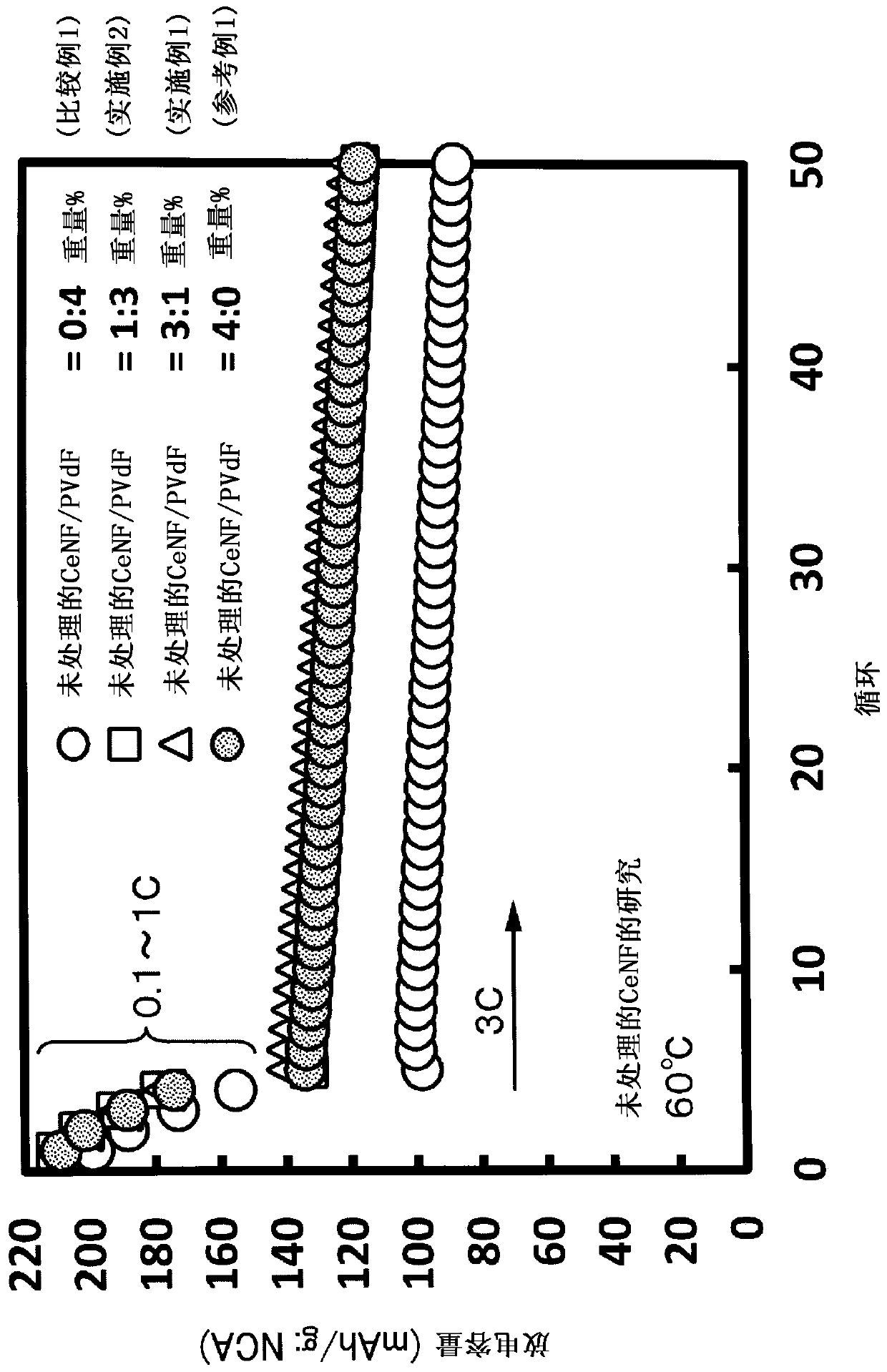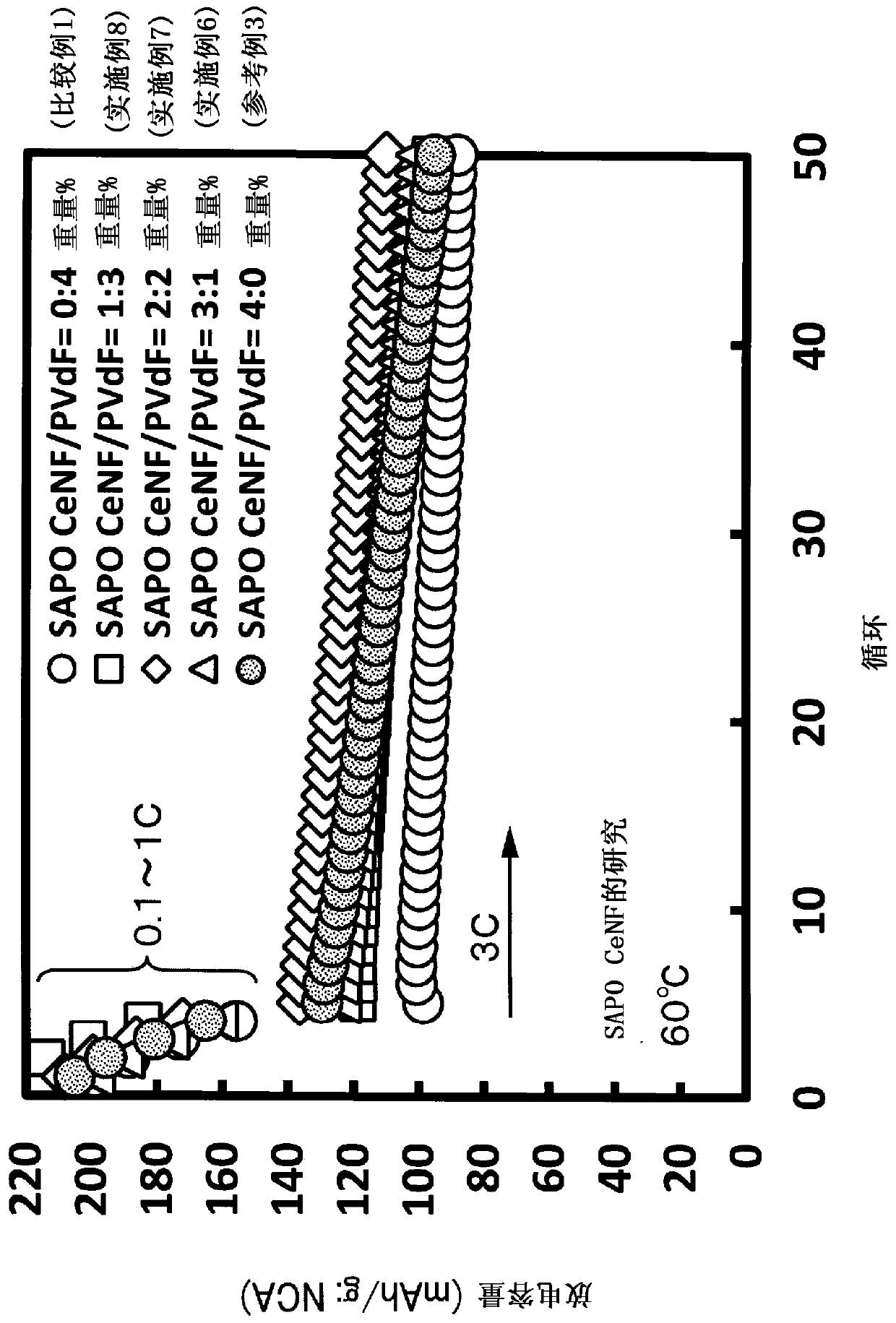Binder for lithium ion batteries and electrode and separator using same
A lithium-ion battery and adhesive technology, applied in battery electrodes, non-aqueous electrolyte battery electrodes, lithium batteries, etc., can solve problems such as residual starting materials
- Summary
- Abstract
- Description
- Claims
- Application Information
AI Technical Summary
Problems solved by technology
Method used
Image
Examples
Embodiment 15
[0237] The NCM523 electrodes of Example 15, Example 16, Reference Example 7, and Comparative Example 2 were test cells equipped with electrode binders shown in Table 7. For the test cell, use NCM523 electrode (test electrode) as positive electrode, SiO electrode as negative electrode, polyolefin microporous membrane (PP / PE / PP) as separator, 1 mol / L LiPF as electrolyte 6 (EC:DEC=50:50% by volume) to produce a CR2032 type coin battery.
[0238] The SiO electrode is produced in the following manner: SiO, PVA (polymerization degree 2800), acetylene black, and VGCF are combined so that the solid ratio becomes 94:10:4:1 mass %, and the rotation and revolution type mixer (Thinky Company Manufacture, Refining Taro, 2000rpm, 15 minutes) for kneading, the slurry obtained by slurrying is coated on a copper foil with a thickness of 40 μm, pre-dried at 80°C, and then dried under reduced pressure (160°C, 12 hours). The capacity density of SiO electrode is 3.2mAh / cm 2 . It should be note...
Embodiment 17
[0260] The test batteries of Example 17, Example 18, Example 19, Example 20, and Comparative Example 3 were test batteries provided with separators 1 to 5 shown in Table 8. The test battery (NCM111 / graphite full battery) is made by using the NCM111 electrode as the positive electrode, the graphite electrode as the negative electrode, the test separators 1 to 5 as the separator, and 1 mol / L LiPF as the electrolyte 6 (EC: DEC = 50: 50% by volume), CR2032-type coin cells were assembled and left to stand in an environment of 80° C. for 1 hour to produce. In addition, the coating layer of the separator was provided on the side of the positive electrode.
[0261] The NCM111 electrode was produced by mixing NCM111, PVdF (weight-average molecular weight: 280,000), and acetylene black so that the solid ratio was 91:5:4% by mass, and using a rotation-revolution mixer (manufactured by Thinky Corporation) , Rentaro, 2000rpm, 15 minutes) for kneading, the slurry obtained by slurrying was ...
PUM
| Property | Measurement | Unit |
|---|---|---|
| diameter | aaaaa | aaaaa |
| length | aaaaa | aaaaa |
| diameter | aaaaa | aaaaa |
Abstract
Description
Claims
Application Information
 Login to View More
Login to View More - R&D
- Intellectual Property
- Life Sciences
- Materials
- Tech Scout
- Unparalleled Data Quality
- Higher Quality Content
- 60% Fewer Hallucinations
Browse by: Latest US Patents, China's latest patents, Technical Efficacy Thesaurus, Application Domain, Technology Topic, Popular Technical Reports.
© 2025 PatSnap. All rights reserved.Legal|Privacy policy|Modern Slavery Act Transparency Statement|Sitemap|About US| Contact US: help@patsnap.com



